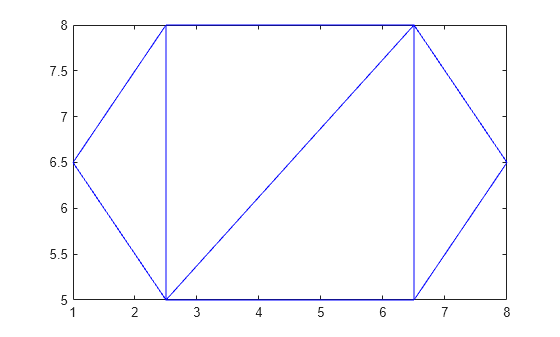cartesianToBarycentric
Convert coordinates from Cartesian to barycentric
Description
B = cartesianToBarycentric(
returns the barycentric coordinates of the points in TR,ID,C)C relative
to the triangulation object TR. Each row of C
contains the Cartesian coordinates of a point with respect to the triangle or
tetrahedron indexed by ID. The identification numbers of the
triangles or tetrahedra in TR are the corresponding row numbers
of the property TR.ConnectivityList.
Examples
Input Arguments
Extended Capabilities
Version History
Introduced in R2013a
See Also
barycentricToCartesian | delaunayTriangulation | triangulation
